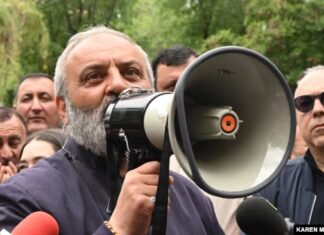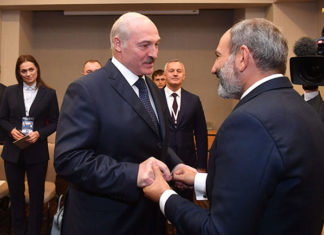By David Davidian
It has been said, “Give a man enough rope, and he will hang himself.”
During the immediate post-Soviet era, the West did its best to induce “cowboy, laisse-faire capitalism” within newly independent states where the majority never had a tradition of defending their sovereignty, never mind creating a Grand National Strategy where most of the societal, economic, and security infrastructure would be served. The Baltic States and Eastern European republics had some tradition, within memory, that could be relied on to a certain extent. Such was not the case with peoples and lands incorporated into the Soviet Union in its nascent years. One of those regions was the Transcaucasian Socialist Federative Soviet Republic, which formed the basis for the eventual Georgian, Armenian, and Azerbaijani Soviet Socialist Republics, each created in 1936. None of these three Soviet republics had much of a tradition of modern self-rule as a national institution.
At the dissolution of the Soviet Union, circa 1991, Georgia, possessing a long border with Russia, defined itself as a state that might parallel many of the ex-Warsaw pact countries in adopting a Western/NATO/EU ethos. Adoption was easier than trying to create an indigenous national ethos, especially when along with adoption came substantial financial incentives from the World Bank, IMF, and the EU. Georgian President Mikheil Saakashvili opened his doors to Turkish investments, hoping it would be a step closer to NATO membership. As a result, Georgia reaped the benefits of Western capital and significant NGO funding. However, also as a result, today Turkey weighs heavily on, if not controls, Georgia’s foreign policy.
Circa 1992, as Azerbaijan was still developing its Turkic character initiated a century earlier, was provided a shot of pan-Turkism personified by Abulfaz Elchibey, Azerbaijan’s second president. However, with hydrocarbon reserves, the Aliyev dynastic authoritarian government that followed could afford to inculcate a modern Turkish-inspired national ethos, much of it based on creating an existential enemy, the Armenians. This, of course, was in reaction to losing the first Karabakh War in the early 1990s. Azerbaijani hydrocarbon transport and reserves are supported by Western powers, mainly the UK, with nearly $70B invested by British Petroleum. In addition, Azerbaijan borders both Russia and Iran. The latter border geography has offered Azerbaijan an interesting relationship with Israel, with purported Israeli intelligence bases situated within Azerbaijan used against Iran. Azerbaijan can afford to pay handsomely for what it lacks in diplomatic acumen, including bribery in the EU and bought-off media, along with systemic money laundering.
Due to many cultural and social characteristics – the result of the Turkish genocide that emptied Asia Minor’s Armenian population and culture, immediately followed by Armenia’s remaining land forcibly incorporated into the Soviet Union – Soviet Armenia and the independent Armenia that evolved from it created a society whose skepticism is perhaps only matched by Israeli Jews. In society, the family was of primary importance, whereas the state within living memory was either genocidal or totalitarian. All three peoples of the region, Azerbaijanis, Georgians, and Armenians, had their local brand of corruption. Each country extracted whatever physical frameworks were possible from the Soviet state, especially as Glasnost and Perestroika opened the gates for individuals to indulge themselves in the accumulation of individual wealth.









